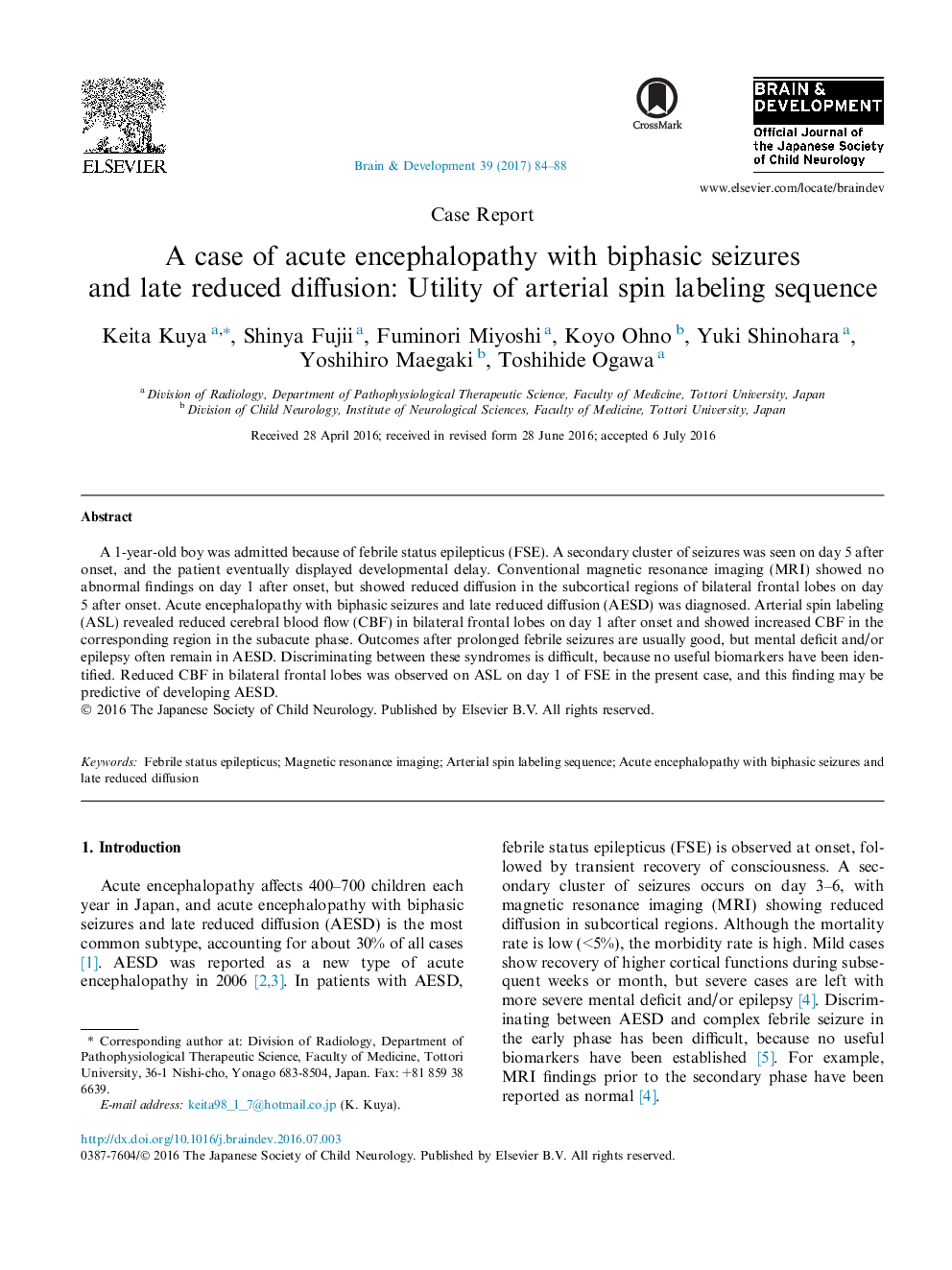| Article ID | Journal | Published Year | Pages | File Type |
|---|---|---|---|---|
| 5626453 | Brain and Development | 2017 | 5 Pages |
A 1-year-old boy was admitted because of febrile status epilepticus (FSE). A secondary cluster of seizures was seen on day 5 after onset, and the patient eventually displayed developmental delay. Conventional magnetic resonance imaging (MRI) showed no abnormal findings on day 1 after onset, but showed reduced diffusion in the subcortical regions of bilateral frontal lobes on day 5 after onset. Acute encephalopathy with biphasic seizures and late reduced diffusion (AESD) was diagnosed. Arterial spin labeling (ASL) revealed reduced cerebral blood flow (CBF) in bilateral frontal lobes on day 1 after onset and showed increased CBF in the corresponding region in the subacute phase. Outcomes after prolonged febrile seizures are usually good, but mental deficit and/or epilepsy often remain in AESD. Discriminating between these syndromes is difficult, because no useful biomarkers have been identified. Reduced CBF in bilateral frontal lobes was observed on ASL on day 1 of FSE in the present case, and this finding may be predictive of developing AESD.
